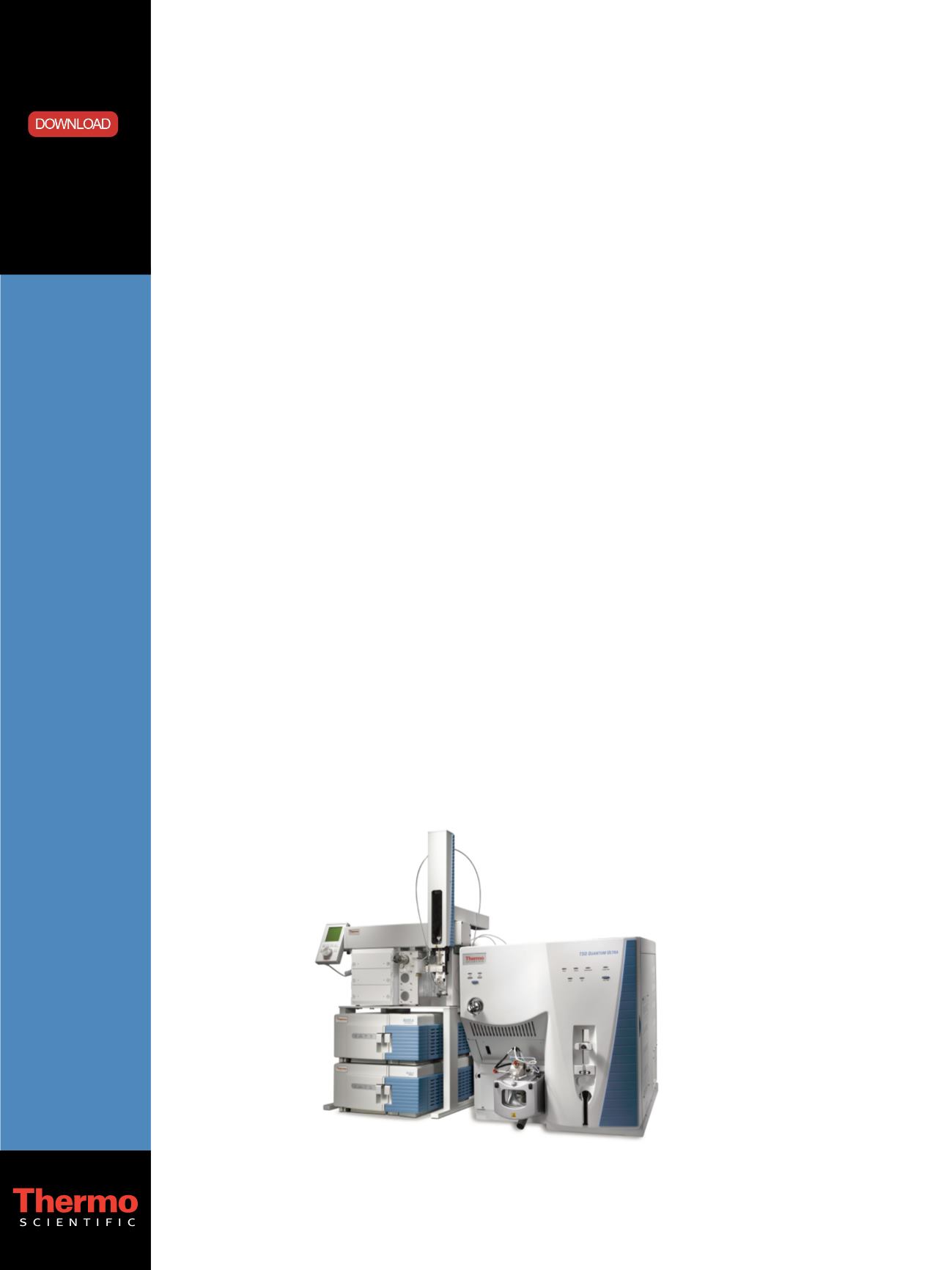

Quantitation of Synthetic Cannabinoids in
Urine Using a Triple Stage Quadrupole
LC-MS System in Forensic Toxicology
Kristine Van Natta, Marta Kozak; Thermo Fisher Scientific, San Jose, CA
Application
Note: 559
Key Words
• TSQ Quantum
Ultra
• JWH-018
• JWH-073
• Spice
• K2
• Forensic
Toxicology
Introduction
Synthetic cannabinoids are compounds made to mimic the
effects of natural cannabinoids found in the cannabis plant
(marijuana). They were first synthesized by pharmaceutical
companies seeking to mimic the beneficial analgesic and
anti-nausea effects of cannabis while trying to eliminate
the psychoactive euphoric effects for which the plant is
so abused. In the mid 1980’s, these compounds began
appearing in herbal incense, marketed as “legal highs”
under the names “Spice” and “K2.” Effects are similar to
those of cannabis, but with reports of increased anxiety
and paranoia. In early 2011, the U.S. Drug Enforcement
Administration (DEA) regulated five of these compounds
as Schedule I drugs.
Simple, robust and precise analytical methods are
needed to quantitate these now illegal compounds in bio-
logical matrices for forensic purposes. Here we will focus
on JWH-018 and JWH-073. Research has shown that
parent compound is not excreted in urine. The reported
metabolites seen in urine are the alkyl-hydroxy and alkyl-
carboxy metabolites of each compound.
Goal
To develop a specific and robust dilute and shoot
quantitative method for the analysis of the alkyl-hydroxy
and alkyl-carboxy metabolites of JWH-018 and 073:
JWH-018-OH, JWH-018-COOH, JWH-073-OH and
JWH-073-COOH in urine.
Methods
Sample Preparation
Urine was spiked with internal standards and hydrolyzed
with
β
-glucuronidase. Fisher Chemical acetonitrile was
added to the hydrolysis mixture and the resulting mixture
was centrifuged. Supernatant was further diluted and
subjected to liquid chromatography-mass spectrometry
(LC-MS) analysis.
HPLC Conditions
Chromatographic analysis was performed using Thermo
Scientific Accela 600 HPLC pumps and a Thermo Scientific
Hypersil GOLD column (100 x 2.1 mm, 3 μm particle
size). Mobile phase consisted of 5 mM ammonium formate
in both water and methanol. The total run time was 15.5
minutes.
MS Conditions
MS analysis was carried out on a Thermo Scientific TSQ
Quantum Ultra triple stage quadrupole mass spectrometer
equipped with a heated electrospray ionization (HESI-II)
probe (Figure 1). Two selected reaction monitoring (SRM)
transitions were monitored for each compound to provide
ion ratio confirmations (IRC).
Validation
Standard curves were prepared by fortifying pooled blank
human urine with analytes. Quality control (QC) samples
were prepared in a similar manner at concentrations cor-
responding to the low, middle and high end of the calibra-
tion range. Inter- and intra-run variability and robustness
were determined by analyzing replicates of each QC level
with a calibration curve on three different days.
Figure 1. TSQ Quantum Ultra triple stage quadrupole mass spectrometer
with Accela HPLC system



















